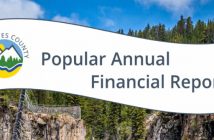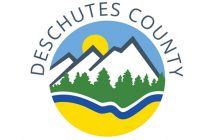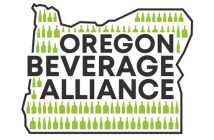(Photo | PxHere)
Our team at Shasta Power is deep in the process of finding the best possible locations for our new solar projects. We are frequently asked how we build solar projects and how we choose sites.
There is a lot that goes into finding a viable solar project site, and this is a commonly underappreciated aspect of solar development. A frequent mistake is to believe that any sunny property is ripe and ready for solar picking. This is far from the reality of project site selection.
One of the most consistent calls our office gets is from landowners or investors who want to sell or lease their land to us for solar projects. Below is a version of how this call goes, and we think it helps to paint a simplified picture of our project assessment process.
Landowner: Hi, I own 20 acres in the desert in Nevada, and I know it’s perfect for solar! How much can you pay me to lease it?
Representative: Hi, thanks for calling. We’re happy to take a look at the property and help you determine if it’s usable for one of our projects. Just a few questions first.
Landowner: Well, I already know that the solar irradiance is high, so can’t you just put some panels on it, and work out the price for a lease?
Representative: Not exactly. There are a few things we need to take a look at before then.
Landowner: Sure, no problem, what kind of stuff do you need to know?
Representative: Well, we will need to sell the power to someone, and your local utility is probably the most likely buyer unless there is a very large industrial or commercial off-taker (energy customer) nearby. Do you know who the potential buyer might be?
Landowner: I don’t know exactly, but there is a very big power line near the land — I don’t know who runs it, but it’s only like four miles away. That’s good, right?
Representative: It depends on a lot of things, but generally it’s not relevant, because large, high-voltage lines like you’re describing are not designed to accept new lines and four miles is a long way. So, we will need to compile a list of these possible off-takers, including the owner of that line, and determine who, if anyone, is already serving their current and future energy needs. We’ll need to look at the current energy producers nearby, such as coal plants, hydro-electric plants, natural gas plants or others, and see if any of these have decommissioning dates, and if so, whether there are already new solar or wind projects in the pike to back-fill this future unmet capacity.
After that, we will need to evaluate the existing transmission infrastructure, e.g. substation capacity and design, existing transmission lines, interconnection queues, Power Purchase Pricing and timelines for connecting.
Representative: Have you undertaken any of these desktop-level analyses?
Landowner: No. How long does that take? Is it expensive?
Representative: You know, the process can take months or years unless you know the right people to work with and the right questions to ask. Have you established any relationships with the local permitting authority? How about any engineers?
Landowner: No.
Representative: The same goes for pricing. Without the right approach, a small-scale development can easily be swamped in multi-six-figure analysis and due diligence expenses, only to find out that it won’t work. Since this process is costly, we find that the scale needs to be quite a bit larger than your 20 acres for a development to be cost-effective.
Landowner: Like how big?
Representative: Solar panel technology is advancing rapidly, but the price of power has been declining, so depending on the market, between 600 and 2,000 acres is the minimum acreage for a utility project to have legs. Have you spoken with all of your neighbors and gotten them on board as well?
Landowner: No. Actually, I only know one of them, and they think solar is useless and kinda ugly.
Representative: Well, that’s certainly a challenge, but not one that we can’t handle. Our team is expert in discussing solar development with cold landowners.
Landowner: Well, I’m glad you think you may be able to bring the neighbors along, but I had no idea the scale had to be so big. I figured I could just do something on my property by itself. I’m sort of annoyed with the realtor that sold me the land saying it would be good for solar; he didn’t mention any of this stuff.
Representative: Honestly, we hear that all the time. Many real estate professionals sell the idea of energy on a property and ignore or just don’t know the reality. I am sorry you had to work with someone like that. I’m sure it’s frustrating to be getting all of this at once. But you own the land now, so let’s keep trying to see if there’s an opportunity here for you.
Have you conducted any recent evaluations of the endangered, threatened or sensitive species habitat on or near your property?
Landowner: As far as the endangered species go, I really don’t know. I guess there was an article some time back about the Greater Sage Grouse, but I didn’t think it mattered for my land. Do you think that’s an issue?
Representative: If an environmental evaluation determines that the presence of a protected species like the Greater Sage Grouse is present, then there will be mitigation requirements from many possible agencies, and it largely depends on the jurisdiction of your property, its zoning, the population of the species and many other factors. But the short answer is yes, it’s very relevant for solar or any other development.
Landowner: Dang, this is nuts, I had no idea this was going to be so much work. I figured I could just call you up and we could work out a deal. I mean, is there any chance we can build on this land?
Representative: I’ll be honest with you, rarely does someone call up and their land is just exactly right for a solar project, but I want to get through a few more things before making a determination. So stay strong!
One of the additional criteria has to do with other property title and mineral rights. Do you own the mineral rights under your property, or have they been severed? Are there any easements, liens or other encumbrances on your property?
Landowner: Shoot, I have no idea about the minerals, and I’m not sure what severed means. I assumed those rights just came with the land. As far as other issues: the taxes are all paid up, and there are no liens that I know of, but I don’t know anything more on easements or other stuff. How important is that?
Representative: Very. If we can’t deliver a clean title, then the land is uninsurable, and uninsurable land is unfinanceable, and unfinanceable land in a multi-million dollar project means it won’t get built. So we will need to clear all of that up first. If you own title insurance, it will need to be very recent, or we will need to obtain a new policy. Just something to keep in mind down the road.
Landowner: Geeze man, this is pretty insane. Does all of this really need to be looked at? Can’t we just put a few panels on the land?
Representative: I wish that were true, but the reality is more complicated, and honestly, this is just the warm-up. We still need to talk about flood zones, other waterways like ephemeral streams, archeological surveys, geological surveys and elevations, other environmental impact studies, permitting, stakeholder engagement, labor issues and engagement with local unions, tax implications, regulatory framework, political risk/advantages, budgeting, long-term irradiance studies and much more, all of which are unique to your area. Given the small scale of your property, and at this early stage, it’s hard to say if your land is right without a deeper dive.
Landowner: Honestly, I’m going to have to think all of this over before we take it any further. By the way, since this sounds so complicated, but I am still interested in solar investing, is there any way to just invest with you all?
Representative: Yes. We would love to have that conversation with you, and we would welcome your investment if it’s the right fit for you.
This fictional conversation is an amalgam of hundreds of calls our team has had over the years, and we think it demonstrates some of the work our team is doing behind the scenes. But we couldn’t do this without our investor support, which is the other half of this equation. This way of creating Power By People is new in the solar development world, but we know it’s the right way to do it.





